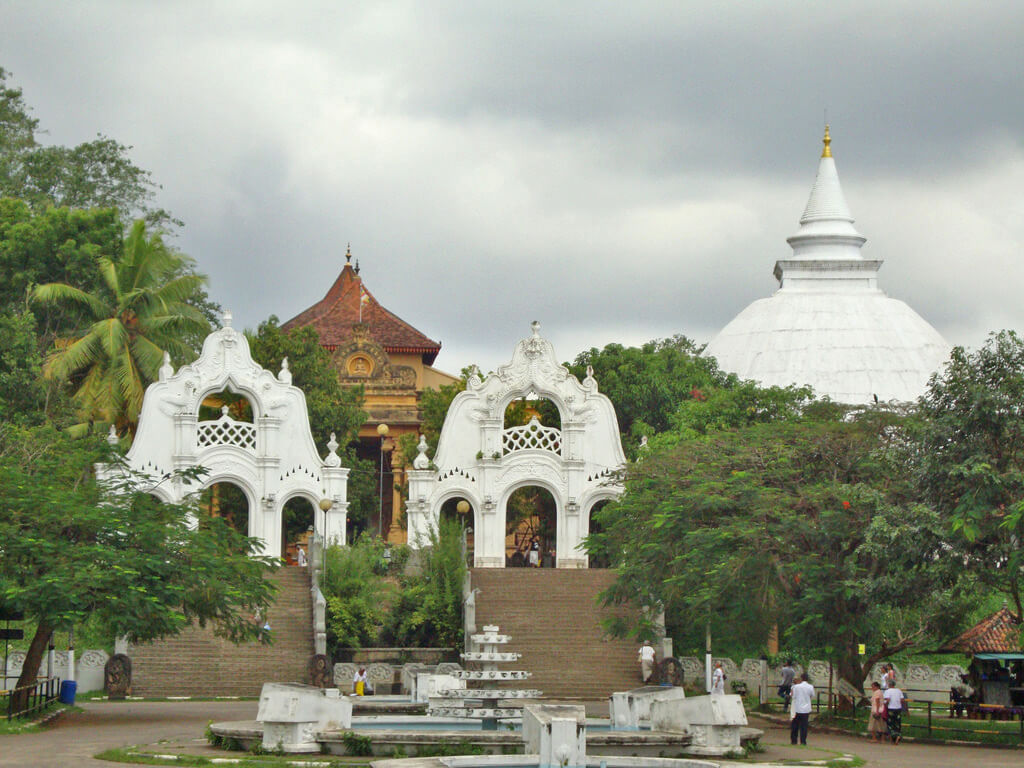National Museum
The Colombo Museum as it was called at the beginning was
established on 1st January 1877. It founder was Sir William Henry
Gregory, the British Governor of Ceylon (Sri Lanka) at the time.
The Royal Asiatic Society (CB) was instrumental in bringing to the
notice of Gregory on his appointment as Governor in 1872 the need
for a public museum with much difficulty the approval of the
legislative council was obtained within a year. The Architect of
the Public Works Department, J.G. Smither was able to prepare the
plans for new structure on Italian architectural style. The
construction was completed in 1876 and the Museum commenced it
functions in the following year.
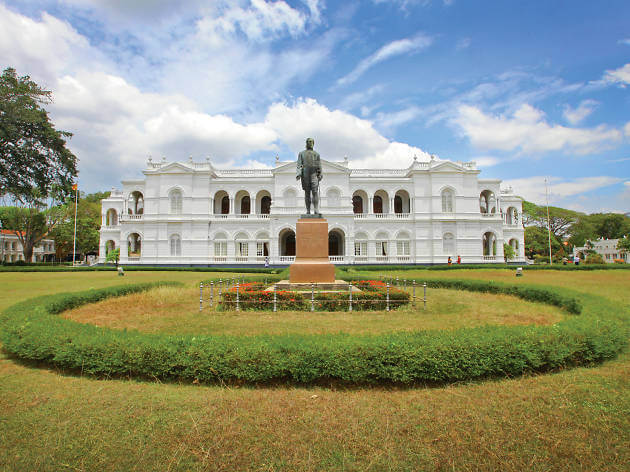
Gangarama Temple
On three island podiums on Beira Lake, Colombo easily visible from Sir James Peiris Road, is the Seema Malaka, a Buddhist temple, a beautiful & unexpected site. Amidst the hustle & bustle of the city, the tranquil temple takes us by surprise. Not to be outdone, we take to the bridge like walkway leading to the temple in the middle of the lake with the breeze cutting into us. Set on three linked platforms rising out of the lake, the temple has a small Bo tree & delicately carved kiosk on the two outer platforms standing on either side of the larger central structure. The lake is surrounded by fine old trees, provides welcoming breezes throughout the day & attracts pelicans, egrets & cormorants.
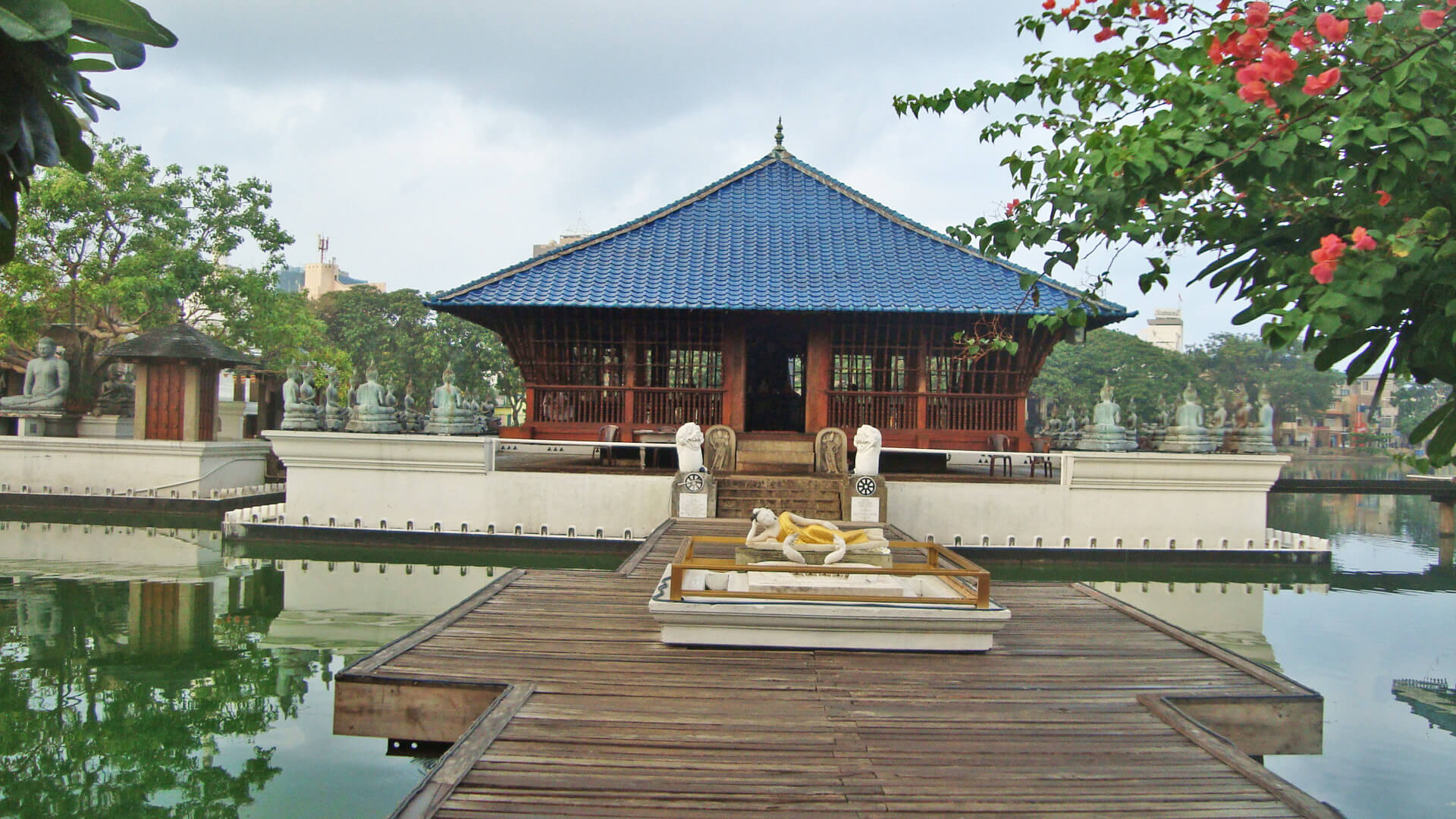
Lotus Pond Theater
The Nelum Pokuna (Lotus Pond) – Mahinda Rajapakse Theatre is a
fully equipped sate of the art performance centre, meant for large
scale theatrical productions. The theatre consists of two venues
for performances, which includes the main auditorium and an Open
Air Amphitheater.
Situated in the heart of Colombo city, this modern architectural
masterpiece facilitates easy access for both local and foreign
producers. The Theatre is also surrounded by several five Star
Hotels and other commercial establishments.
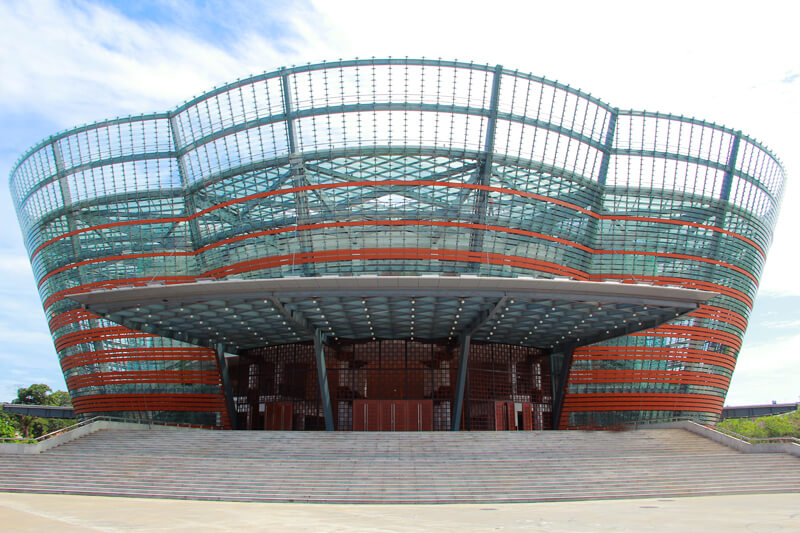
BMICH
The Bandaranaike Memorial International Conference Hall (BMICH),
Built between 1970 and 1973, the convention centre was a gift from
the People's Republic of China in memory of Solomon Ridgeway Dias
Bandaranaike, Prime Minister (1956–1959). The construction of the
hall was carried out by a joint Sri Lankan and Chinese workforce
with a considerable portion of the building materials being
imported from China.
In 1998 a small Exhibition Centre, the Sirimavo Bandaranaike
Memorial Exhibition Centre, was built on the grounds as a gift
from China.
The BMICH premises is managed by the S. W. R. D.
Bandaranaike National Memorial Foundation (BNMF) which is chaired
by the President of Sri Lanka.
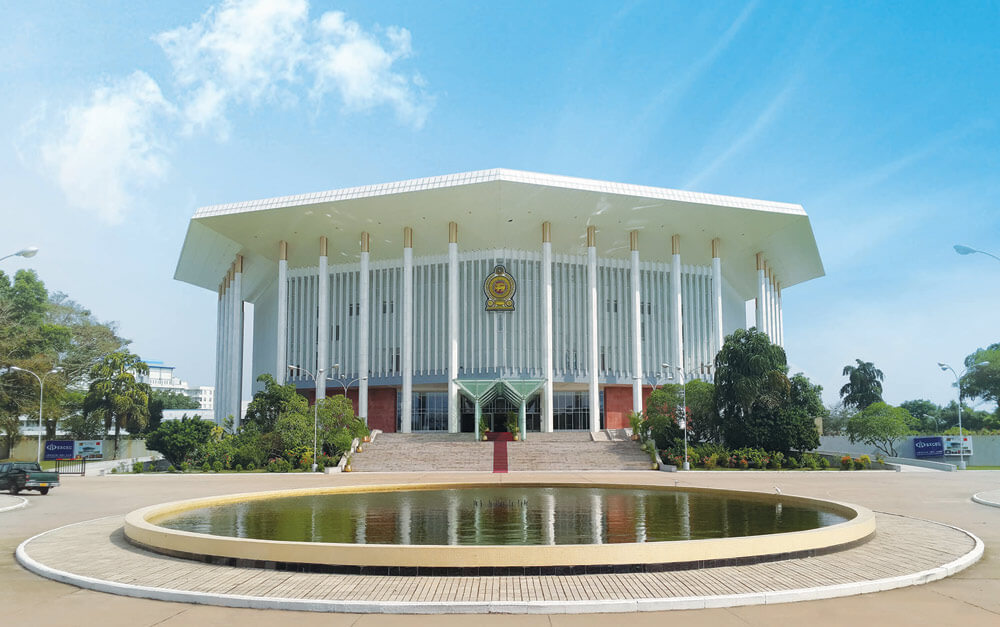
Galle Face Green
Located in the heart of the business capital of of the country;
Colombo, the Galle Face Green in Sri Lanka is a five hectare
ocean-side urban park, which stretches for a half kilometre along
the coast.
It is a magnificent place to witness a marvelous sun set over
western coast of Sri lanka. The area was initially put to plan and
laid out in 1859 by Governor Sir Henry George Ward, although the
original Galle Face Green extended over a much larger area than is
seen today.
The Galle Face Green in Sri Lanka was initially used for many
recreational activities. These include activities such as horse
racing and golf. It was also used as an area to play cricket,
polo, football tennis and rugby.

Independence Square ( Memory Hall )
Independence Memorial Hall is located in the Independence Square at Colombo 7. This place is known as Torrington Square in early days. This Hall was built for the commemoration of the independence from British in 1948. But the construction of was started after the Independence. This Hall is based on the architecture of the Audience Hall( Magul Maduwa) located in Kandy. The column and pilers are decorated with traditional Sri Lankan designs and statues of lions are placed around the the building.
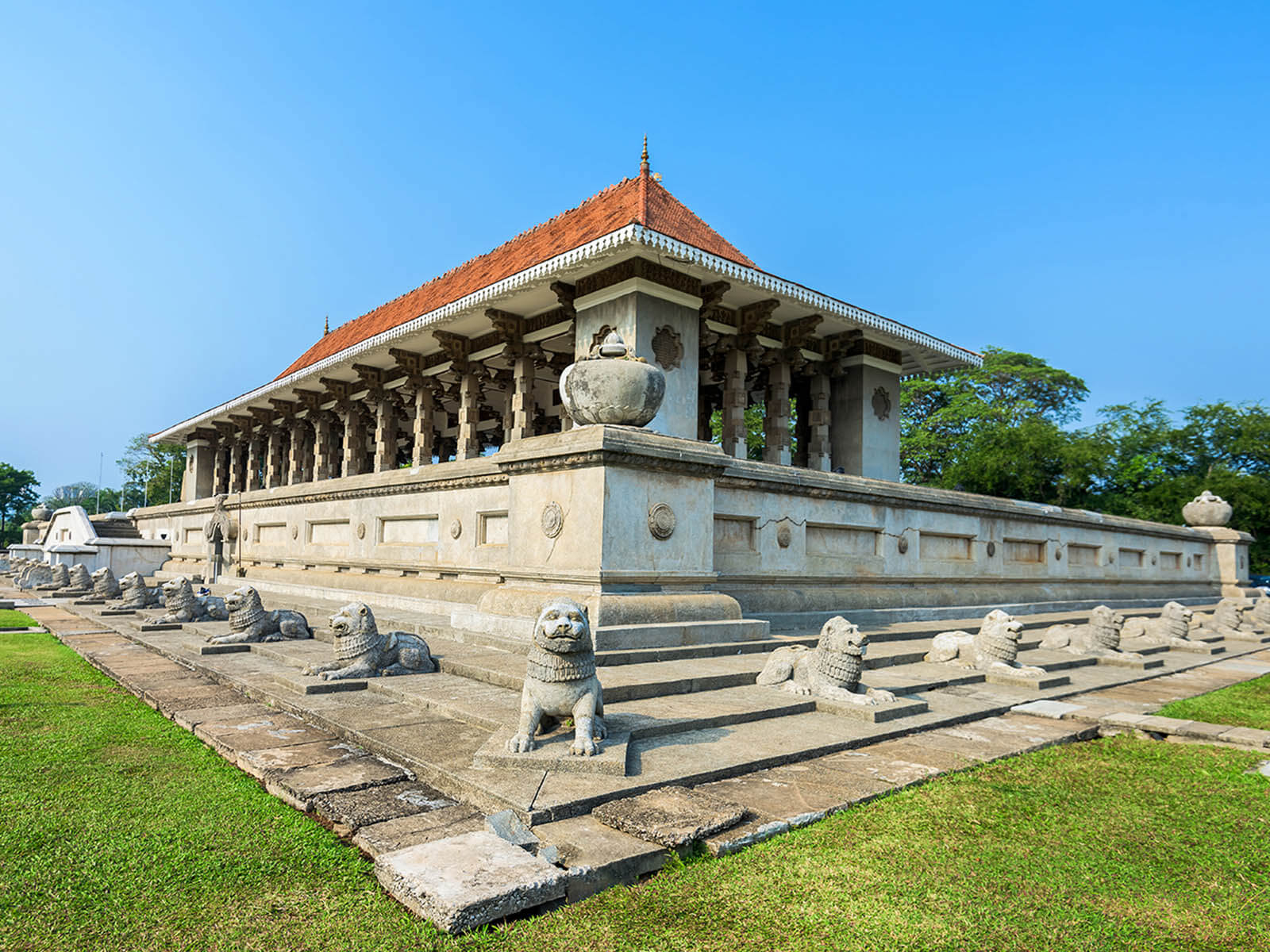
Town Hall
Colombo Municipal Council building, or famously known as “Colombo Town Hall” one of the prominent land mark in Colombo. This building is located in front of the Viharamahadevi park and currently houses Colombo Municipality mayor’s office, admin staff and council meeting room. Construction of this building was done according to the British architecture. The front white Columns and the roof top dome add majestic look to the building. The original land of the this building included the Viharamahadevi park also. Even now it has a large ground in front of the building and it used for various meetings.
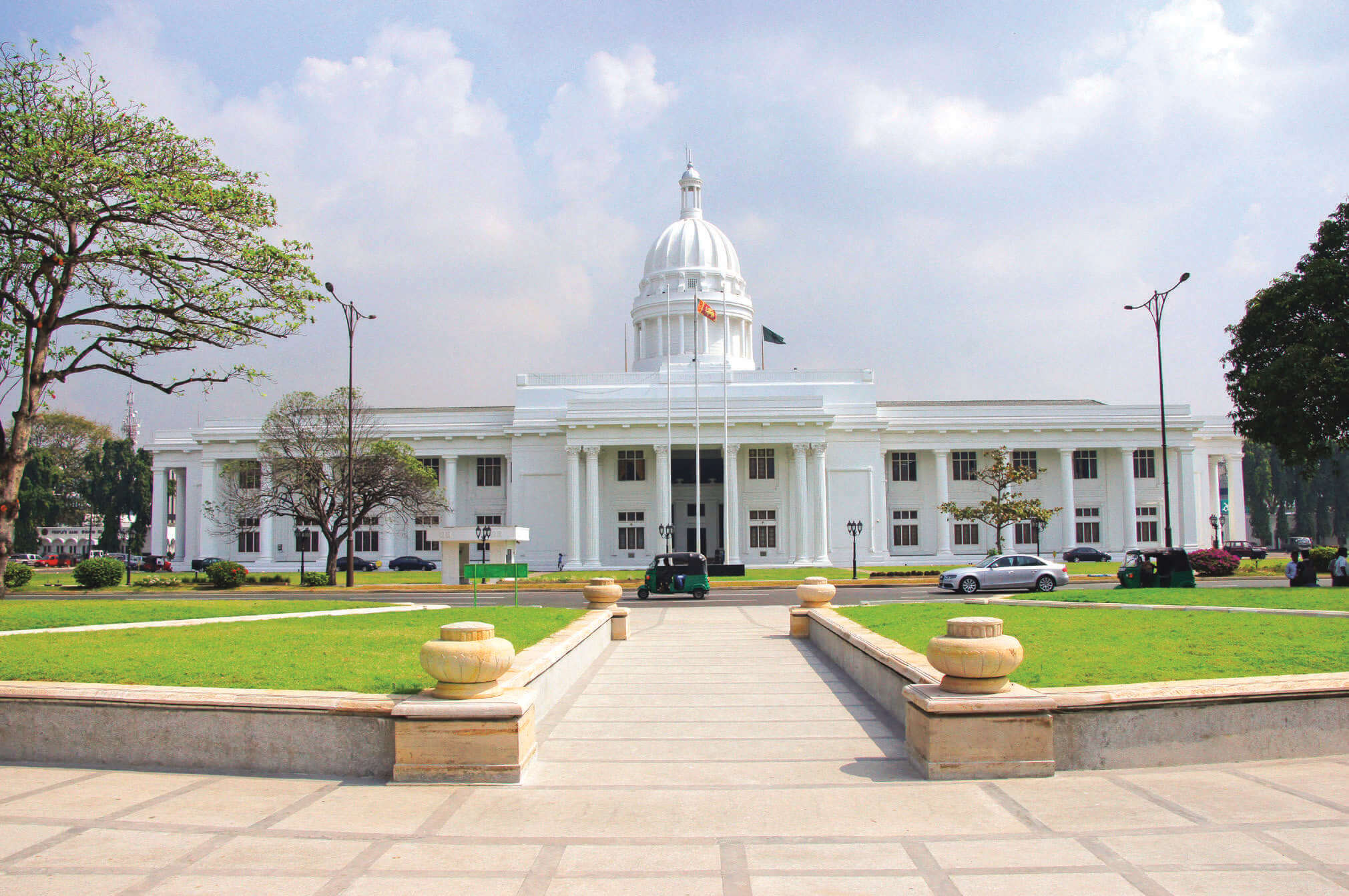
Kelaniya Temple
Kelaniya Temple built on the banks of the Kelaniya River is one of the most sacred sites of Sri Lanka. It is believed Buddha together with 500 Arahats (Supremely enlightened beings) visited Kelaniya on the Wesek day of the Buddhist Era 2531 and expounding of the Dhamma, the Buddhist doctrine to the inhabitants of the island. Buddha’s timely visit to the island resulted in quelling an imminent war between two kings named Chulodara and Mahodara over a jewel–encrusted throne. Buddha having preached the doctrine on the disputed throne offered to him ensued lasting peace between the two kings. The great stupa built upon the site enshrining the throne was since then called Kelaniya Raja Maha Vihara.
